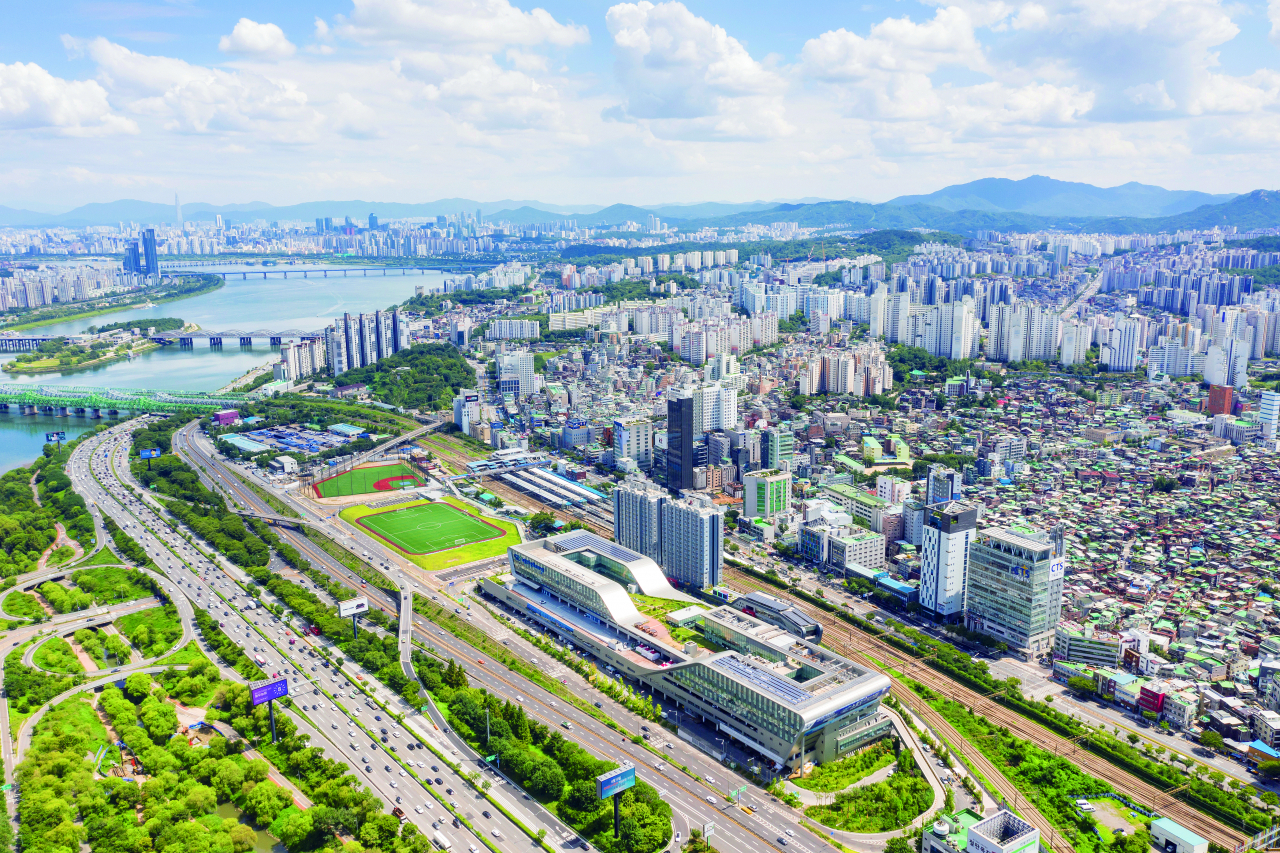 |
An aerial view of Noryangjin, Dongjak-gu, Seoul. (Seoul Museum of History) |
Noryangjin Station, on Seoul Subway Lines No. 1 and 9, is best known as the home of the nation's largest fisheries wholesale market, a habitat for aspiring civil servants and the birthplace of "cup bap."
What greeted this reporter upon stepping outside of the station was, however, a sprawling bright green soccer field set against the backdrop of Yeouido’s old landmark 63 Building and a few other high-rises.
The soccer field, along with a baseball field and a running track, were built two years ago on the land where the old fisheries market building used to stand. The new modernized building, which looks just like a big shopping mall, is about 150 meters away.
On the opposite side, across the railroad, is where countless youth spent their prime years putting in their blood, sweat and tears to secure what they believed were "jobs for life." The street is lined with all sorts of hagwon, or cram schools, that help prep for interviews, physical exams and written tests to become police and fire officials as well as other civil servants.
This is where cup bap was invented, a quick on-the-go meal served in a cup and tailored to busy exam preppers.
Noryangjin, a time-honored hub
The three Chinese characters that constitute the name, Noryangjin, mean “a ferry stop where white herons stroll.”
From the early 18th century, the area has served as a stop for boats traveling in and out along the Han River.
When modern railroads were first introduced here a century later, Noryangjin became the starting point of the first railway line on the Korean Peninsula.
The Gyeongin Railway Line, which runs between Seoul and Incheon, was extended in 1900 across the Han River, as the Hangang Railroad Bridge opened, to Seoul Station.
In 1917, a pedestrian bridge was built across the river from Noryangjin to Yongsan, and Noryangjin grew into a subcenter of the city.
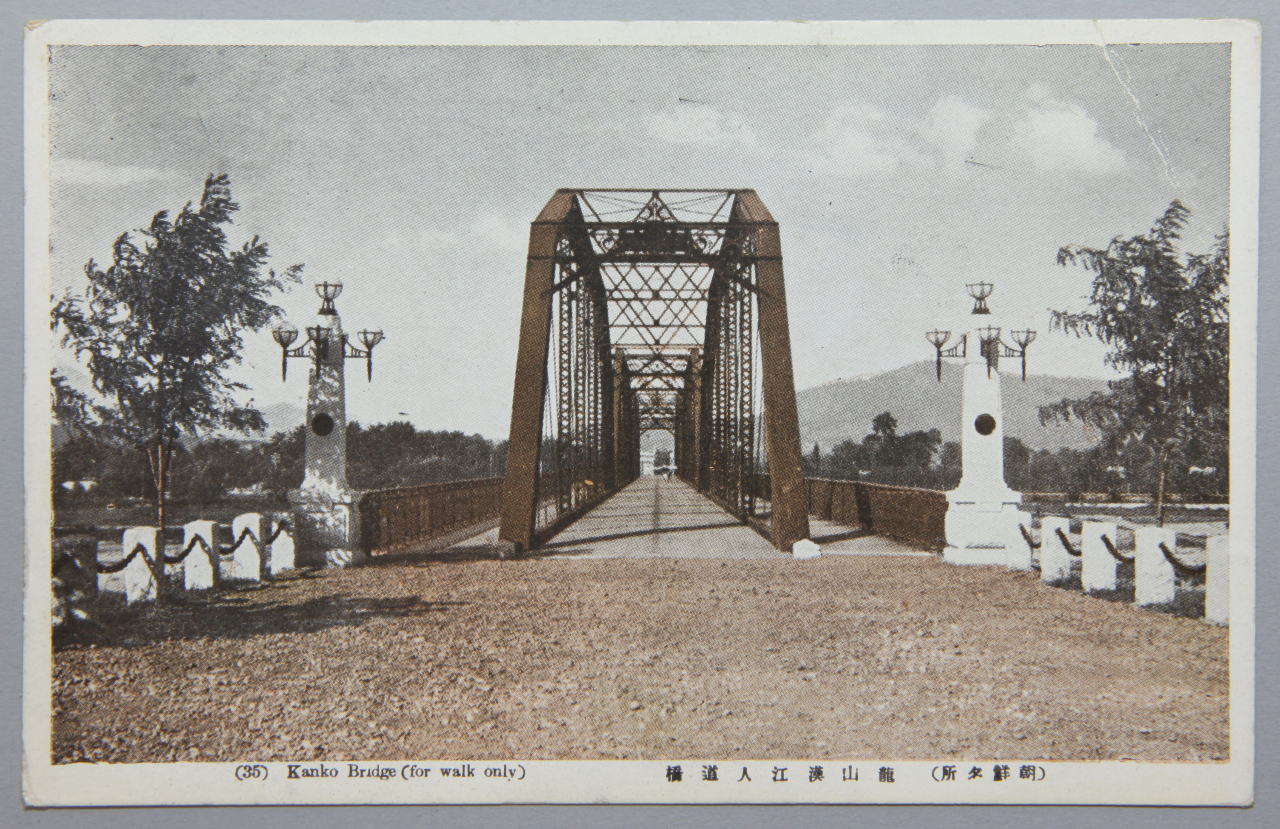 |
A photo of the Hangang footbridge from the 1910s. (Seoul Museum of History) |
In 1974, when the Seoul Metropolitan Subway opened, traffic surged around Noryangjin Station with people transferring from the metro to buses, turning the area into a bustling hub in southwestern Seoul.
The year 1979 was marked by a migration of hagwon, or cram schools, to Noryangjin as the government banned private institutes that prepped repeat takers of college admission exams within the old downtown area of Seoul as part of efforts to reduce overcrowding.
These hagwon had clustered around Seoul’s Jongno in the 1970s, but following the ban, one of the top three -- Daesung Hagwon -- relocated to Noryangjin. Soon, other cram schools started sprouting up in the well-connected transport center that links southern Seoul with the city center via the Hangang Bridge.
Private academies in Noryangjin boomed in the 1980s and 1990s, but withered with changes in the college admission system and the spread of online lessons in the 2010s.
Then came a new breed of hagwon catering to aspiring public officials or public school teachers. Dubbed "iron rice bowl" jobs for their employment stability, such jobs were pursued by millions of Koreans, often for several years, following the 1997-1998 Asian financial crisis, during which hundreds of thousands lost their jobs at companies.
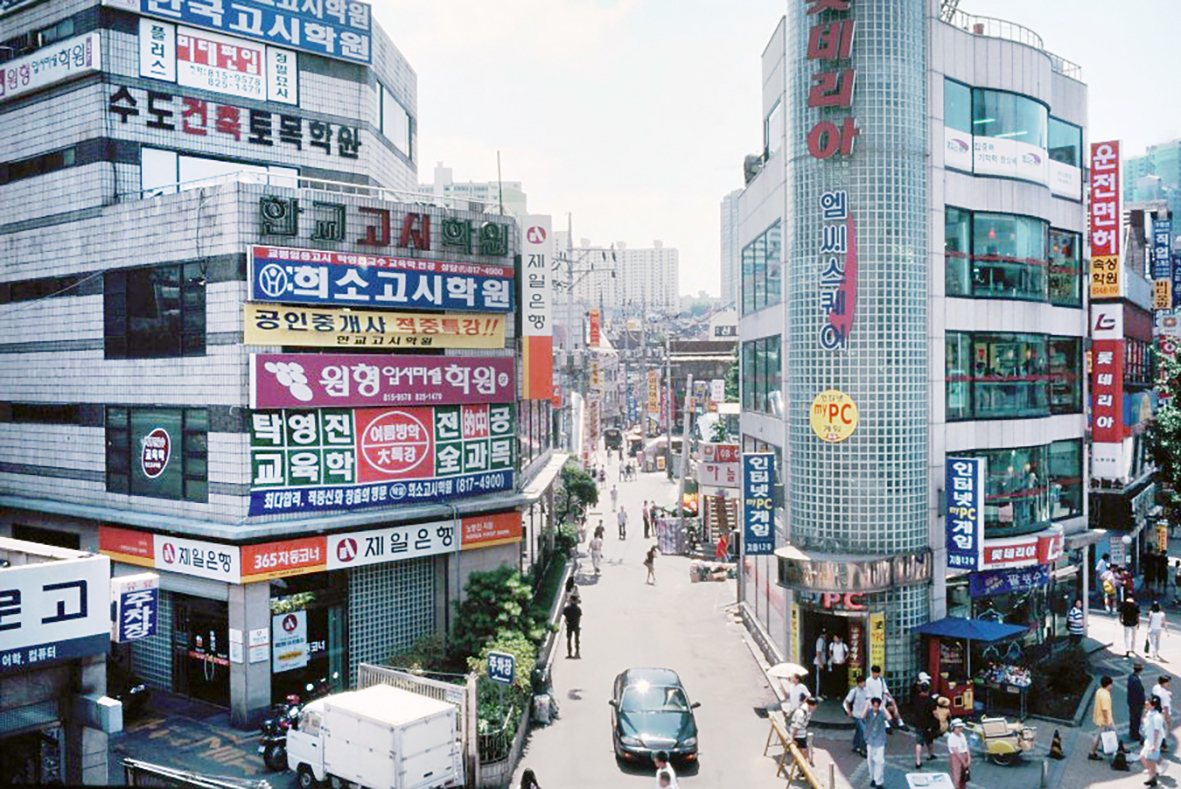 |
Hagwons in Noryangjin in 1999. (Seoul Museum of History) |
Test takers' habitat loses vitality
As those studying for tests to become teachers, Grade 7 or 9 civil servants, police and fire officials often live near the hagwon in Noryangjin to save time, the neighborhood is dotted with commercial establishments for them such as goshiwon (small rooms with low-rent designed for test takers), study cafes, modest eateries, traditional Korean medical clinics, snooker halls, internet cafes and bedding stores.
Noryangjin is also the birthplace of “cup bap,” or rice with various toppings in a paper or plastic cup -- a cheap and quick meal for pupils in between classes.
There is even a sign marked "Cupbap Street" for tourists.
But on a recent Thursday shortly before noon, only five cup bap stalls were open on Cupbap Street lined with about two dozen stalls.
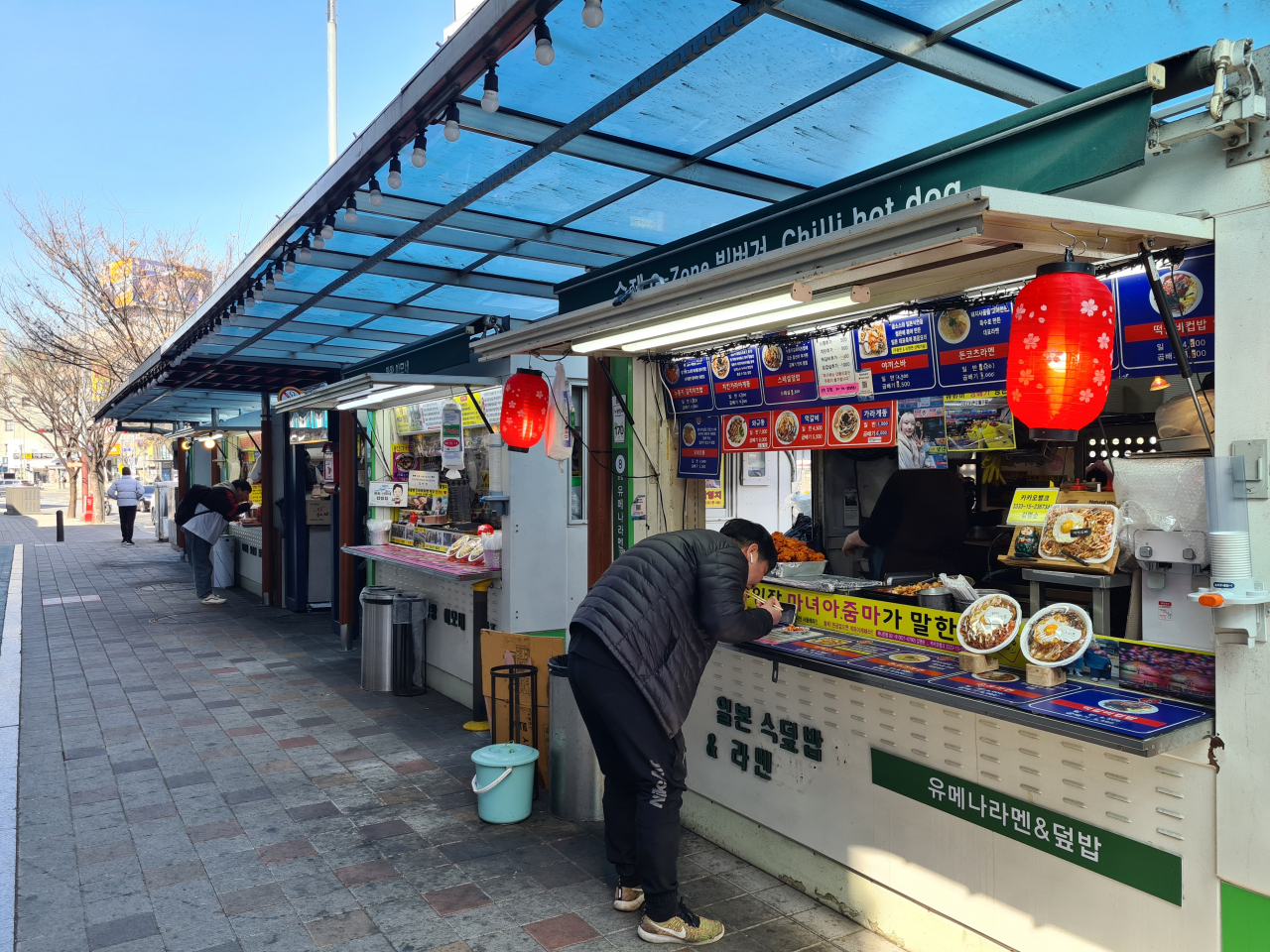 |
Cup bap Street near Exit 3 of Noryangjin Station. (Kim So-hyun / The Korea Herald) |
When asked if the other stalls will be opening later in the day, a woman selling assorted cup bap with pork, spam, cheese, tuna or flying fish roe at between 3,500 won and 5,500 won, said, “some don’t come out every day.”
“Out of business” and “for lease” signs were easy to spot in other stores around Noryangjin Station, especially in the back alleys.
The sluggish mood reflects the dwindling popularity of a Grade 9 or 7 civil servant as a career choice and the preference for online lessons since the start of the pandemic. The ratio of test takers to job openings for public officials has marked a steady decline over the past years.
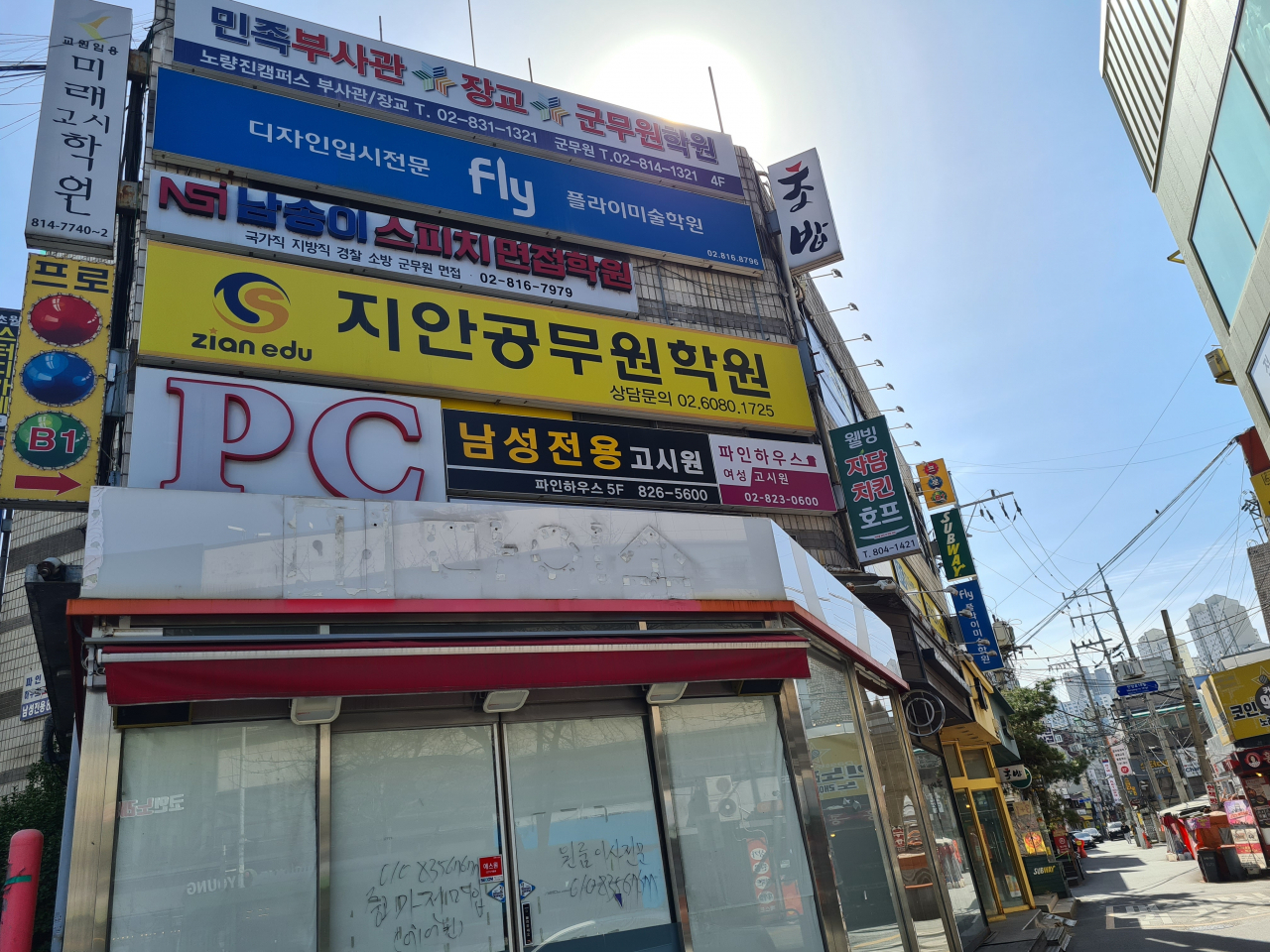 |
A building with an empty first floor, hagwons and other commercial establishments in Noryangjin. (Kim So-hyun / The Korea Herald) |
According to the Ministry of Personnel Management, the competition rate for Grade 9 employment exams has plunged from about 93:1 in 2011 to around 23:1 this year, the lowest in 31 years. The competition rate for Grade 7 tests also fell to its lowest since 1979 to about 43:1.
This is largely because of the growing tendency among young people to choose hefty bonuses and much higher salaries paid by large or medium-sized companies over the small wages, pension and job security of civil servants.
The number of public officials who quit within their first five years also jumped from 5,181 in 2017 to 9,258 in 2020.
According to the Statistics Korea, in 2009, some 28.6 percent of people aged between 13 and 34 picked state organizations as the place they most want to work at, followed by state-funded companies (17.6 percent) and private conglomerates (17.1 percent).
In the same poll last year, conglomerates came first with 21.6 percent, followed by state-funded companies (21.5 percent) and state organizations (21 percent).
The lack of vitality is also observed at the Noryangjin Fisheries Market across the railroad.
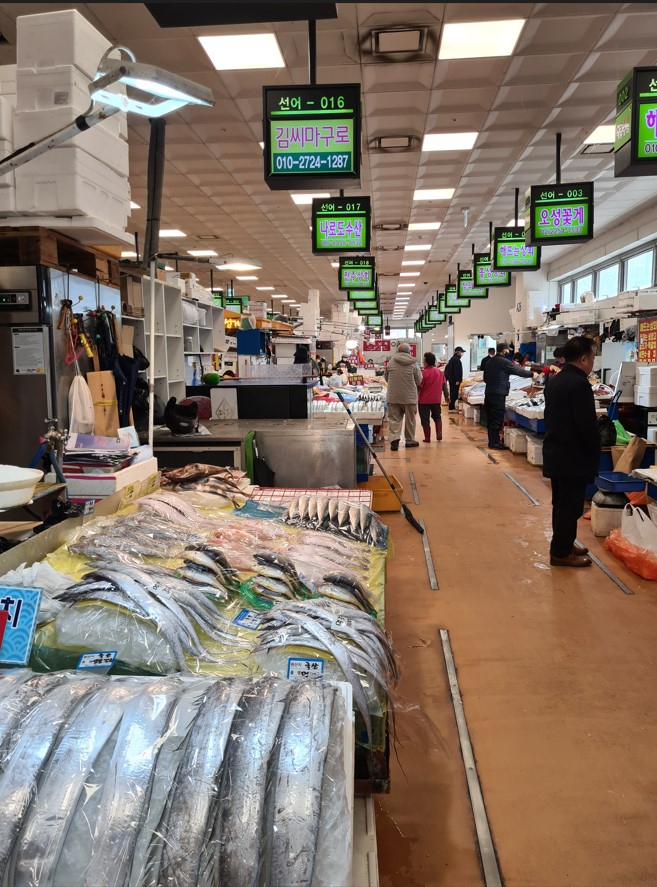 |
Noryangjin Fisheries Wholesale Market (Kim So-hyun / The Korea Herald) |
Not many customers, save a group of Chinese visitors, could be seen around lunchtime at the nation's largest fisheries wholesale market.
The soaring prices of king crab and salmon, for which Noryangjin relies heavily on Russian imports, have dealt a blow to business at the market since the Russian invasion of Ukraine, which led to blocked direct air transport to and from Russia.
King crab was trading at up to 110,000 won per kilogram, which means over 300,000 won per large crab, about 30 percent higher compared to before the Russian invasion.







